Like humans, dogs are susceptible to a wide range of dental issues, including periodontal disease, plaque and tartar buildup, broken teeth, and gum disease. Not only are dental issues painful and uncomfortable, but they can also have serious consequences for their overall health. This is why it’s so important to recognize the signs of dental trouble in your dog.
Let’s explore the most common warning signs that your dog is experiencing dental issues, from bad breath to changes in eating habits. Explore some practical steps you can take to make sure they receive the care they need. Plus, learn about the importance of preventative care and how to start prioritizing your dog’s oral care today!
Recognizing the Signs of Dental Trouble
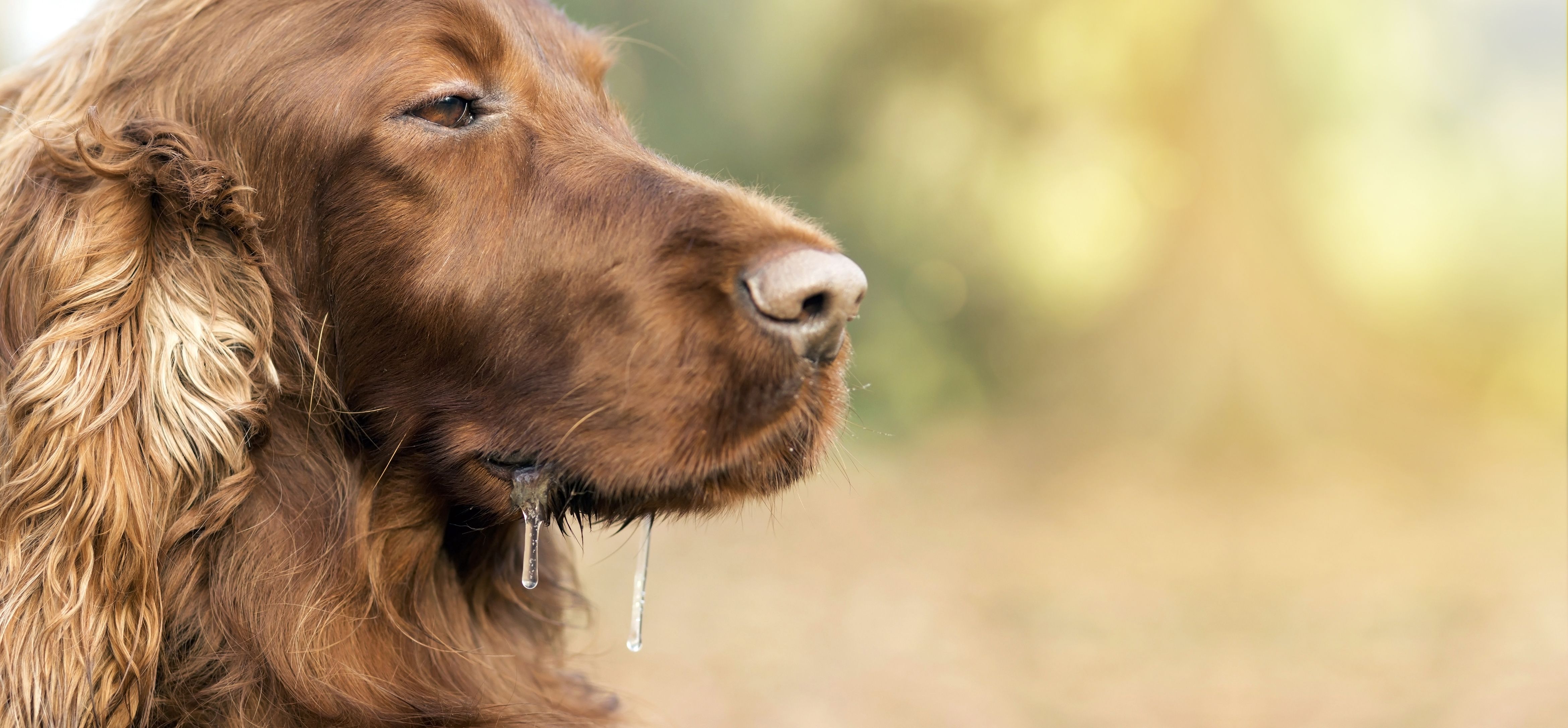
Drooling Irish Setter dog.
Keeping a close eye on your dog’s behavior and oral health is an important step in detecting and identifying dental problems early. Some signs may be glaringly obvious and easy to spot, while others may seem more subtle. However, they can all indicate serious and painful issues. Here are the most common signs to watch out for:
Excessive Drooling
Some dog breeds are known for their heavy drooling, like Bulldogs, Boxers, and Saint Bernards. But if your dog is drooling more than usual, especially if it’s accompanied by other warning signs on this list, it could indicate dental pain or infection. Excessive drooling could also be a sign your dog is feeling nauseous, which warrants investigation.
Bad Breath (Halitosis)
Let’s be honest, “doggy breath” is a common phrase. There’s a good chance that your dog’s breath isn’t minty fresh. However, there’s a difference between typical doggy breath and truly foul-smelling halitosis. A persistently strong, unpleasant smell is a major red flag. Your dog’s bad breath could signal a build-up of bacteria in their mouth.
Changes in Eating Habits
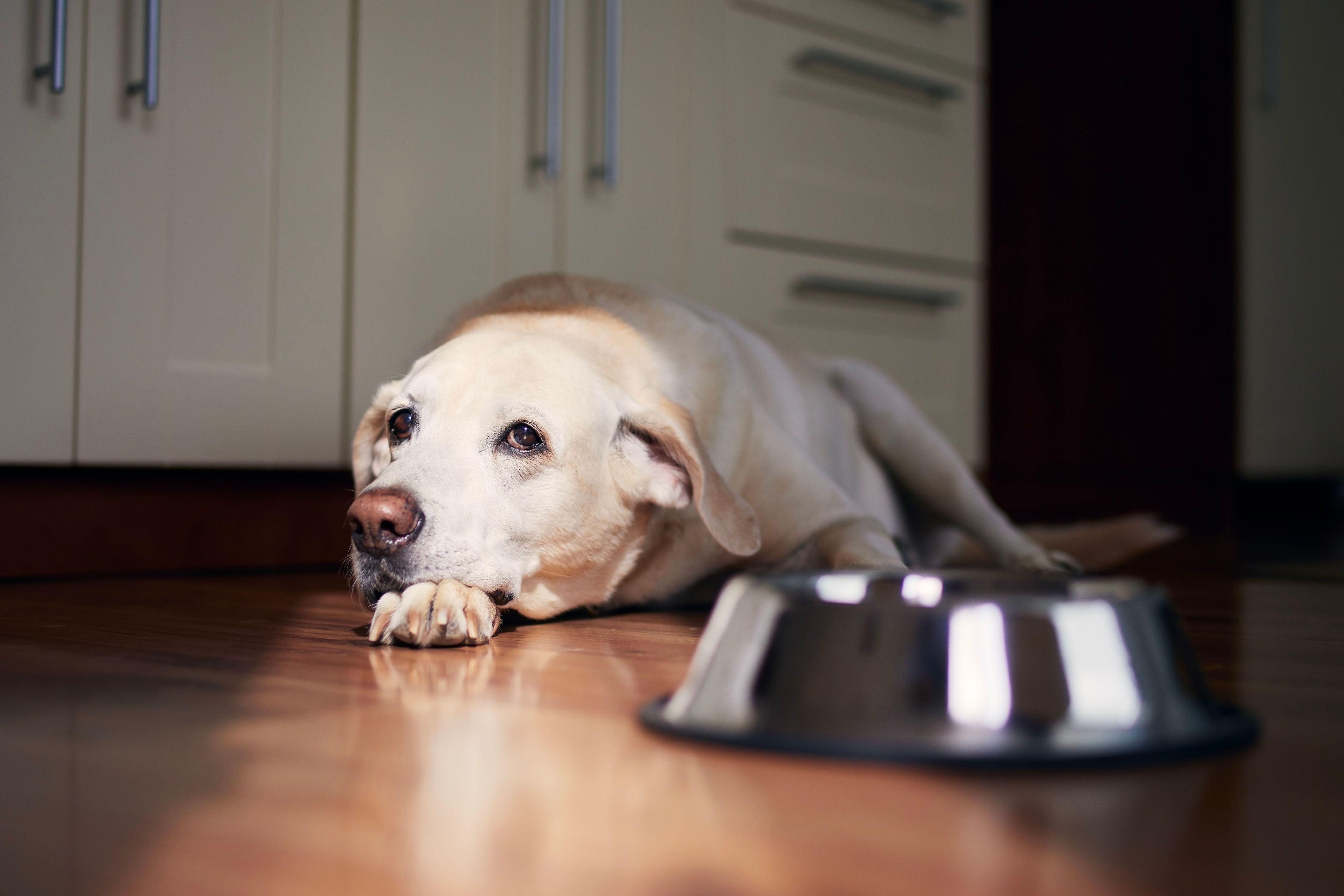
Labrador retriever, with sad eyes, lying near food bowl.
If you’ve ever experienced dental pain, then you know it can make eating extremely uncomfortable. Dental issues may significantly impact your dog’s appetite and eating habits. Watch out for changes, such as:
- Refusing to eat harder treats or kibble
- Preferring soft or wet food and soft treats
- Chewing only on one side of the mouth
- Dropping food while eating
- Eating more slowly than usual
- Showing a loss of interest in food altogether
Pawing at the Face
Dogs who are experiencing dental discomfort will often paw at their mouth or face. They may also rub their face against furniture or the ground. While it’s normal to occasionally paw at their face during grooming (using their paw to help clean their snout), persistent or excessive pawing at their mouth indicates that they are likely dealing with some form of dental irritation.
Pain or Sensitivity Around the Mouth
When you gently touch your dog’s mouth, how do they respond? If they flinch, pull away, or show signs of discomfort, they may be experiencing pain or sensitivity. Be extremely careful when doing this test and checking your dog’s mouth as even the nicest dog may bite if they are in pain.
Red, Swollen, or Bleeding Gums
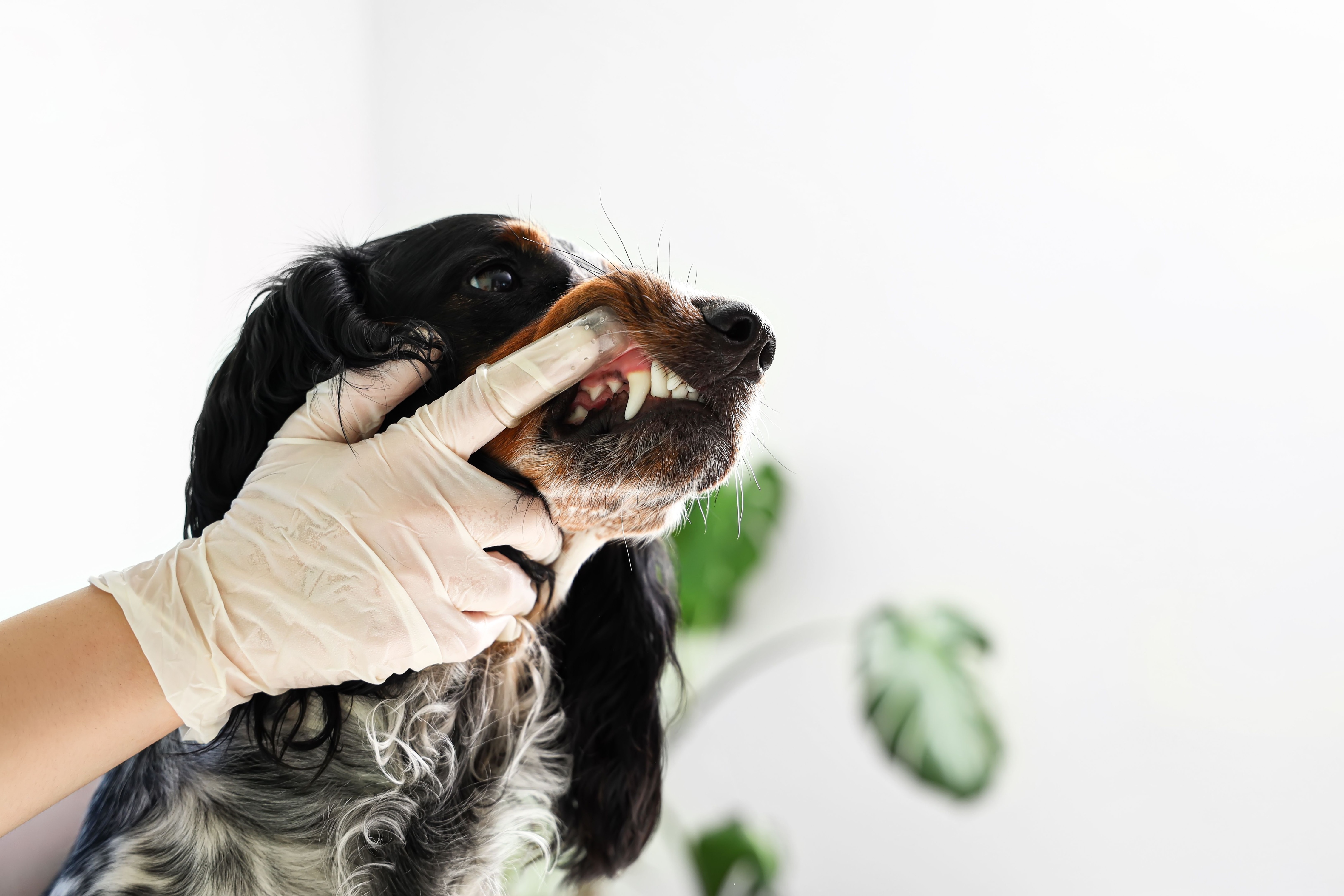
Veterinarian brushing cocker spaniel’s teeth.
The most common warning signs of gingivitis (an inflammation of the gums) are red, swollen, or bleeding gums. A healthy dog’s gums should be a salmon-pink color. If left untreated, gingivitis can lead to periodontitis, a more serious infection that not only irritates the gums but also damages the supporting structures of the teeth.
Loose or Missing Teeth
Speaking of periodontitis, damage to those supporting structures can lead to loose or missing teeth. These can also be caused by trauma or other underlying health issues. Don’t attempt to remove loose teeth yourself. This is a serious concern and requires immediate veterinary care.
Visible Tartar Buildup
Tartar is a hard, yellowish, or brownish substance that accumulates on the teeth, formed by the calcification of plaque (a sticky film of bacteria). It’s the reason why teeth can become discolored if they aren’t cared for regularly. The more tartar present, the greater the likelihood of gingivitis, periodontal disease, and other dental problems.
Nasal Discharge or Sneezing
While it might seem unrelated, your dog’s frequent sneezing or runny nose may be linked to advanced dental disease, particularly in the upper premolars and molars. The roots of these teeth are located close to the nasal passages. An infection in these teeth can spread, causing nasal symptoms.
What to Do if You Suspect Dental Problems
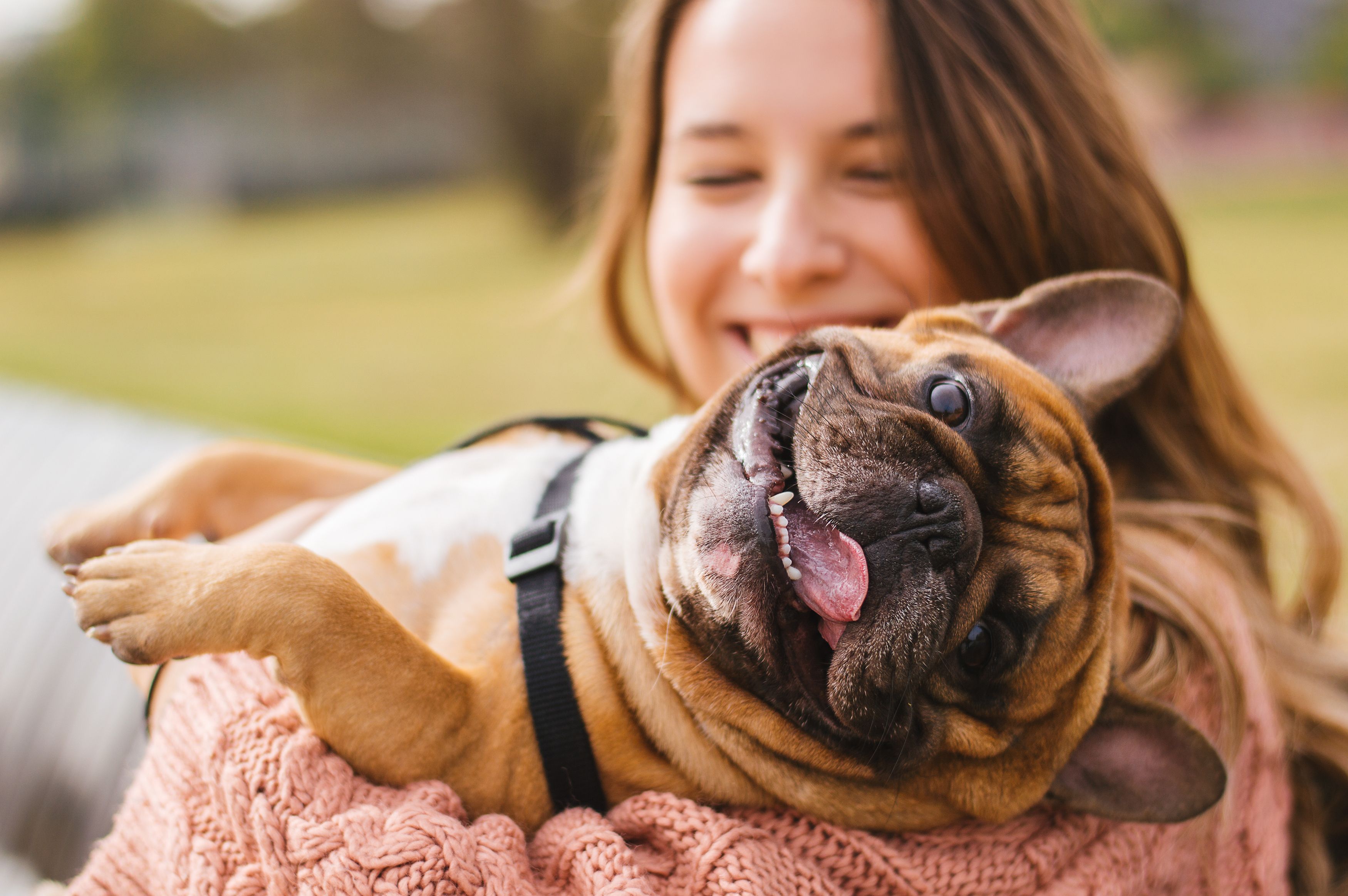
Little dog playing and smiling with owner.
You need to take action if you’ve noticed any of the signs mentioned above. The sooner you address the problem, the faster you can give your dog some much-needed relief. Ignoring dental issues can lead to worsening pain, infection, and the potential for more significant health concerns. Here’s what you should do:
Contact Your Veterinarian
The most important step to take at the first sign of dental trouble is to schedule an appointment with your veterinarian for a dental exam. Professional dental care is crucial for diagnosing and treating dental problems. During a dental checkup, your vet will:
- Perform a thorough oral exam, checking for signs of gingivitis, tartar buildup, loose teeth, and other issues
- Likely recommend a professional dental cleaning under general anesthesia. This allows for a more thorough cleaning, scaling, and polishing of your dog’s teeth, removing tartar buildup. It will also involve an examination of the teeth and gums below the gum line.
- Take dental X-rays to assess the health of the roots of your dog’s teeth and the surrounding bone
Don’t Attempt DIY Dental Procedures
It’s tempting to try and save money by attempting DIY dental procedures at home, but this can be extremely dangerous and can often make the problem worse. Never attempt to remove your dog’s teeth yourself. This can lead to infection, bleeding, and further (sometimes irreversible) damage.
Discuss Ongoing Dental Care
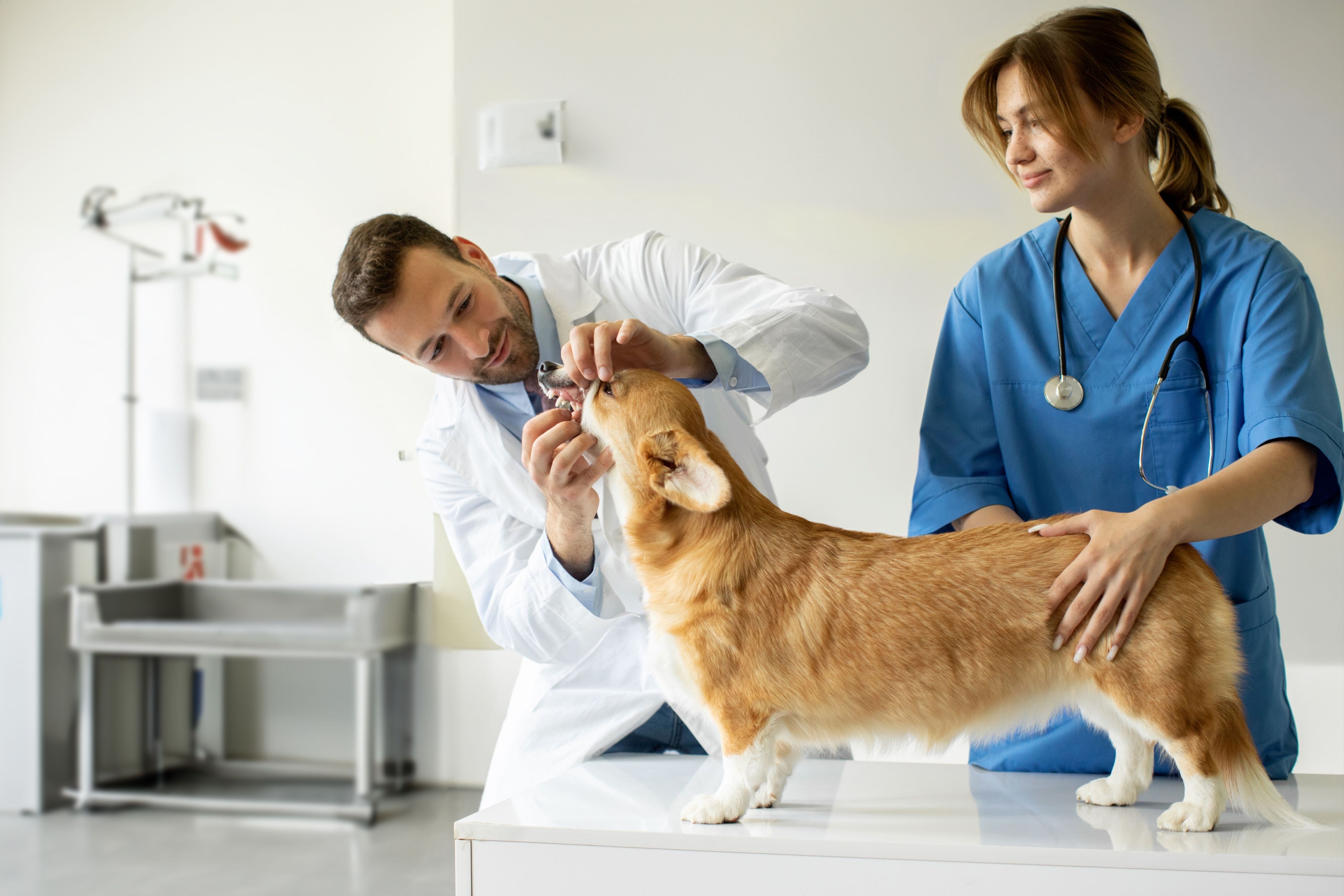
Veterinarian checking the teeth of pretty Pembroke Welsh Corgi.
After addressing the dental problems, it’s time to look at ongoing preventative care. Regular professional dental cleanings are the cornerstone of preventative dental care for your dog. The frequency of these cleanings will vary depending on their age, breed, and individual dental health. Talk to your vet about how often your dog should have their teeth professionally cleaned. They can help you create a dental care plan best suited to their needs.
Consider Dental Insurance
Dental procedures can be expensive, especially if your dog needs extensive treatment. While it’s a little late to help with your dog’s immediate dental needs, you may consider looking into pet insurance options that cover dental care for future issues. Some pet insurance plans offer coverage for routine dental cleaning and treatments, which can help offset the costs, making it easier to give your dog the care they need.
Start Prioritizing Your Dog’s Dental Care Today
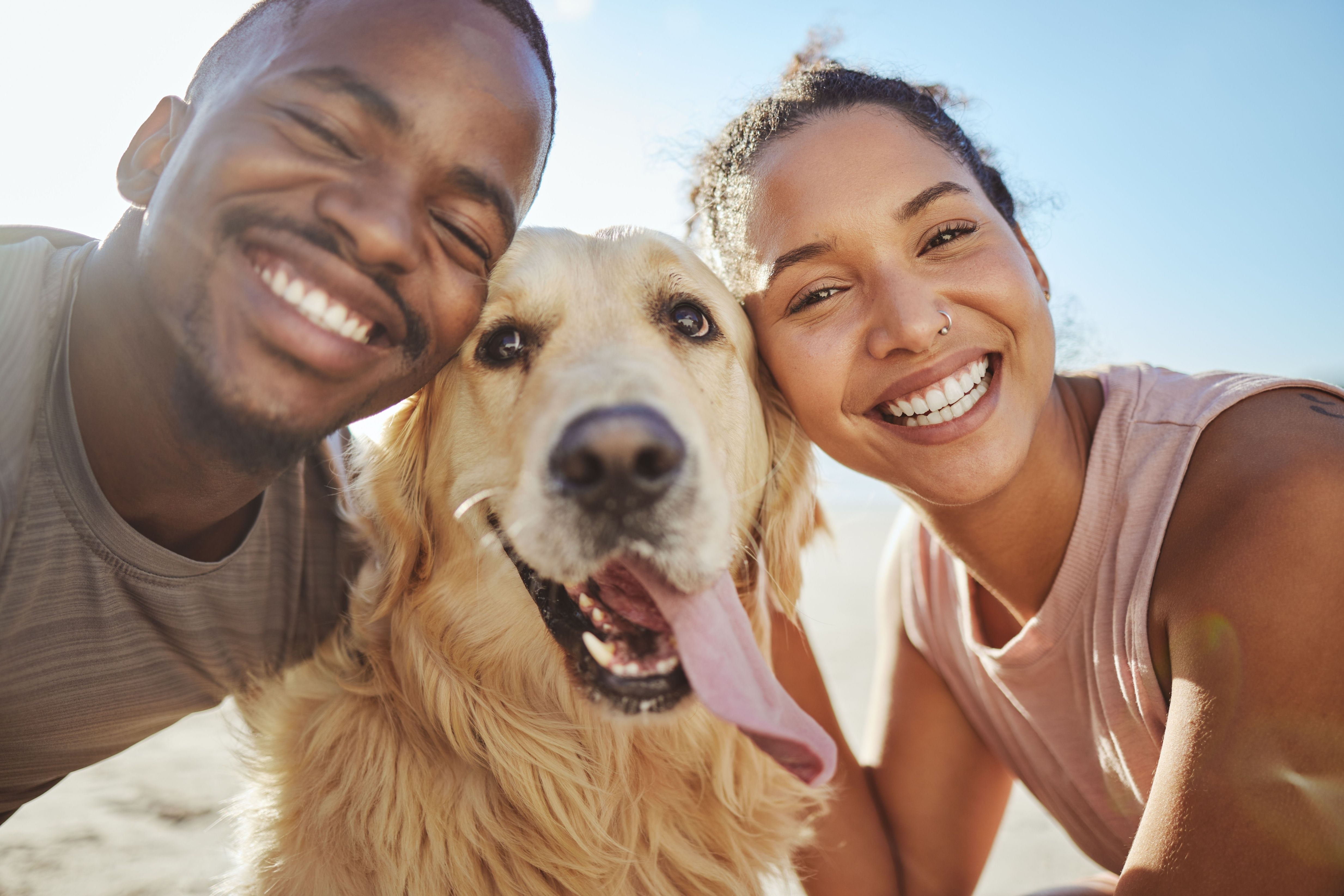
Couple on the beach during summer walking their pet.
Staying on top of your dog’s dental health is a key part of being a responsible pet guardian. There is a lot to consider, from recognizing the subtle signs of dental trouble, such as bad breath, to understanding the importance of regular professional cleanings. But your dog’s health and well-being are worth it.
Remember—early detection and intervention are crucial to preventing dental problems from escalating and leading to more serious health concerns. By staying vigilant, scheduling regular vet checkups, and practicing good at-home dental care, you can significantly contribute to your dog’s comfort, happiness, and longevity.
Don’t hesitate to reach out to your vet if you have any questions or concerns about your dog’s dental health. Together, you can give your dog the best possible quality of life!

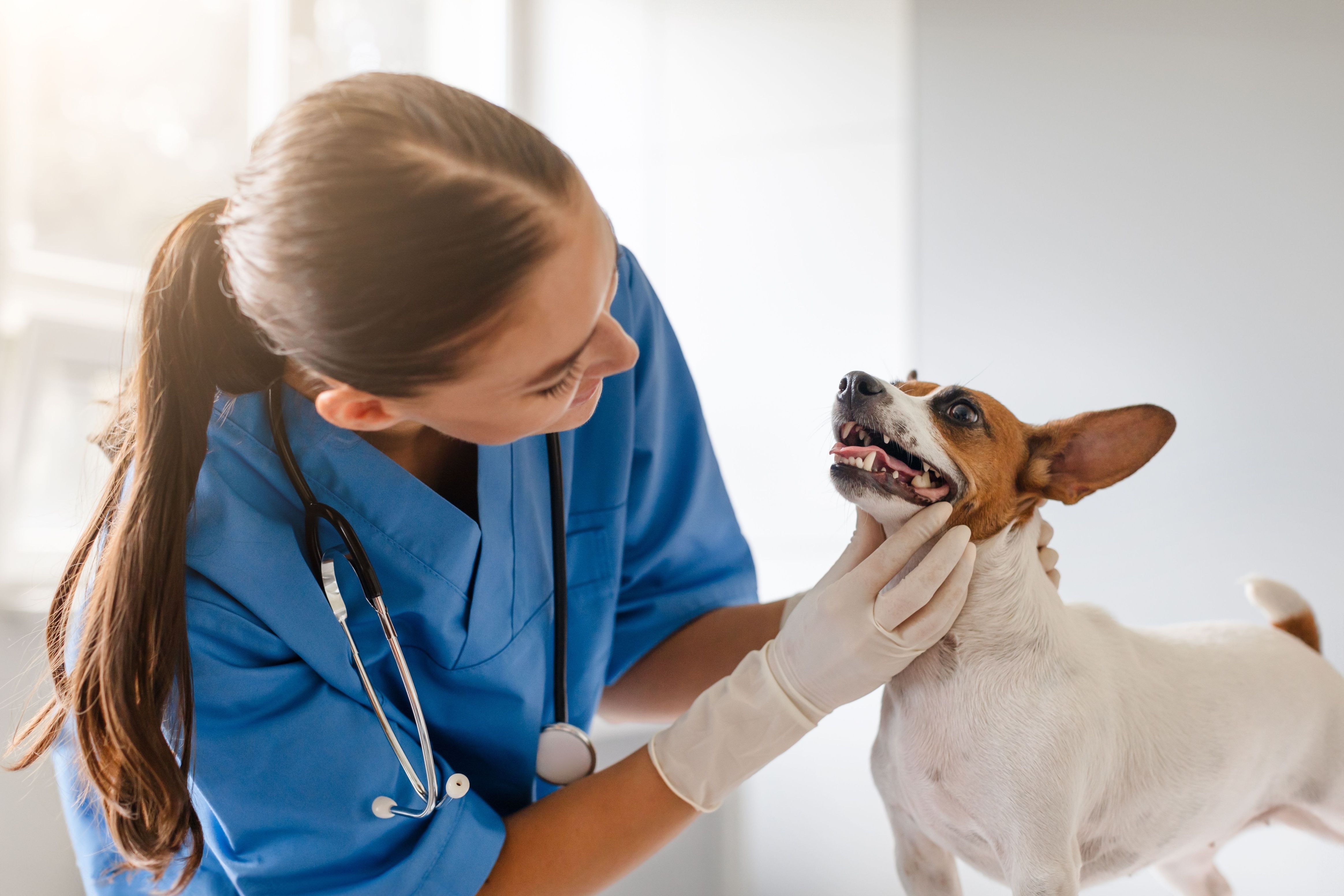
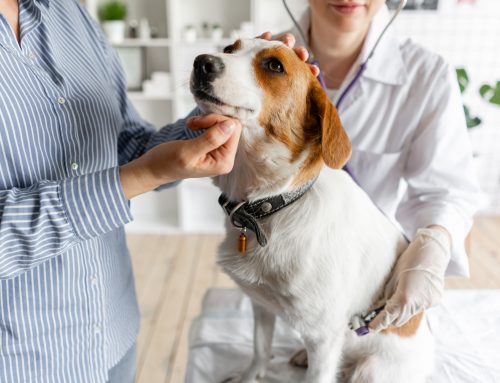
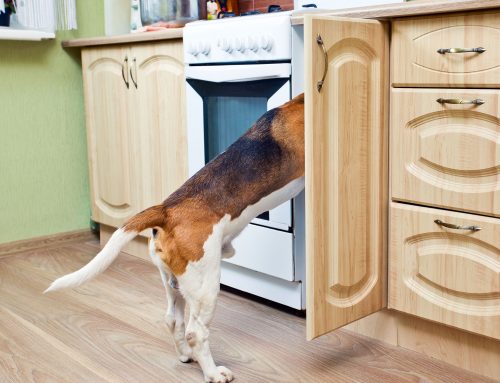
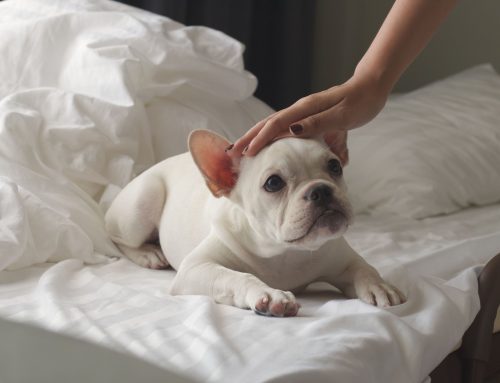
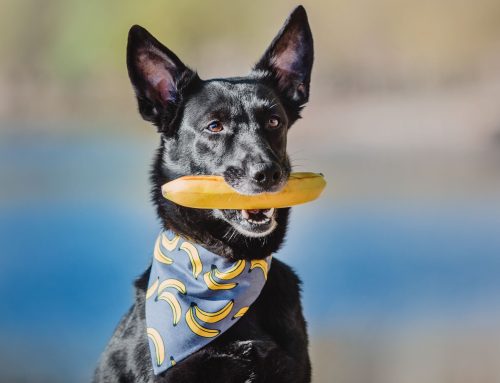
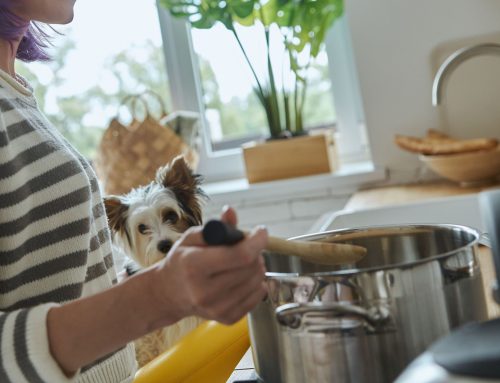
Leave A Comment